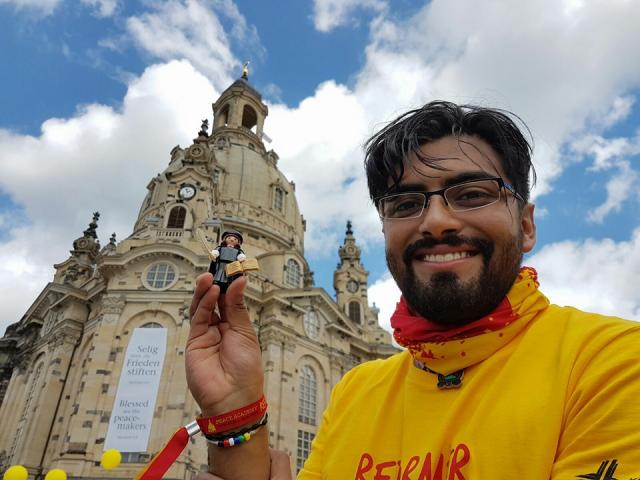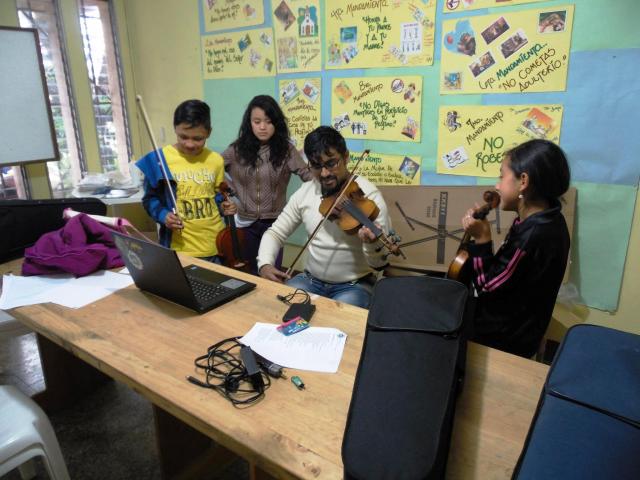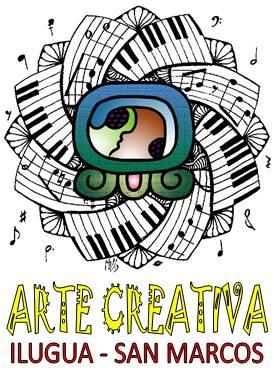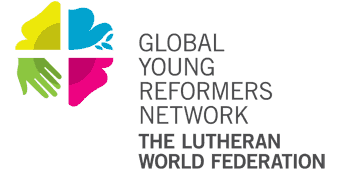Guatemala: Creating Arts

Human beings - not for sale
Creating arts
Young reformers: Pablo Solorzano Gudiel
Church: Guatemalan Lutheran Church - ILUGUA
Implementation period: June 2015-June 2016
How many people were involved? 5
How many people did you reach? 15

My motivation
Which Bible verse motivates you in your work and vocation as a young reformer?
"Therefore, my dear brothers and sisters, stand firm. Let nothing move you. Always give yourselves fully to the work of the Lord, because you know that your labor in the Lord is not in vain." 1 Corinthians 15:58
What is an example of ongoing reformation in your local context?
One of the best examples of the ongoing reformation in my church and society is the ecumenical work between Christian churches. We're having a very inspirational and fraternal experience.
What change do you want to see in your church and/or society?
I want my society to include groups of my country which have historically forgotten our culture and politics. I want a country that allows women and indigenous people to be involved in the decissions and the daily politics of my country.

Living Reformation project
Human beings - not for sale: The Search for our Historic Memory and Human Rights Through the Arts
The arts have been used as tools of teaching and of language throughout history. We use those tools to teach children our maya-guatemalan history, our culture and our memory of the internal armed conflict in Guatemala. As volunteers, we give children the chance to follow an artistic path.
The historic memory of a country is something of value. The need for justice by everyone affected by this difficult and sad time in our country motivates us to teach the history of Guatemala by teaching the arts. This creates dignity and reconciliation between generations. By chosing this path, we believe we're helping support human dignity. This is the relation to the sub-theme, human beings - not for sale.
You can find us on Facebook, Twitter and Youtube
What did you aim at?
To enable children to express their thoughts and feelings through the various
manifestations of art.
What did you achieve?
-
Ensured that both volunteers and children had notions about Guatemalan Mayan culture, the history of Internal armed conflict and human rights.
-
Ensured that through the teaching of art, volunteers could transmit teachings on the subjects.
-
Involved seven young volunteers who in their free time collaborated with the development of the project, five of them in art education and two in logistics.
-
Learning and awareness about Mayan culture, internal armed conflict and human rights were achieved.
What did you do?
There were art classes in which they taught painting and music classes teaching guitar, violin and piano.
Interview with young reformers
- What is the ongoing reformation you want to see in your church?
I would like to see reformation in our state of mind, including more work in climate change and other topics affecting us in our everyday life.
- What has been the reaction of the project among the youth?
The reaction was very good with the children and they received the art and music learning very well. It is very important to teach children in Guatemala about Mayan culture.
- How has been the participation of the youth in the reformation project?
We had 5 volunteers in the project and we had 15 children in our project. We had weekly meetings for learning music, painting and Mayan culture. We also talked about the historical military conflict suffered in Guatemala during the 80´s, making sure the lessons were suitable for children.
- What has been challenging about creating the project?
It was difficult to talk about the military conflict in Guatemala in a way that is suitable for children. As well, the collaboration of the parents was sometimes lacking due to a lack of interest from the parents for their children to attend the lessons and learn about culture.
- Did everything go as planned?
No, as the project developed we changed our plans about the content of teaching and we focused more on elements in the cultural teaching and Mayan culture. The main subject of our teaching was originally the military conflict in Guatemala, but this changed by the time we were running the project.
- How do you see the continuity of the project?
The project continuity depends on our church. The church needs to support our project at the grass root level to continue.
